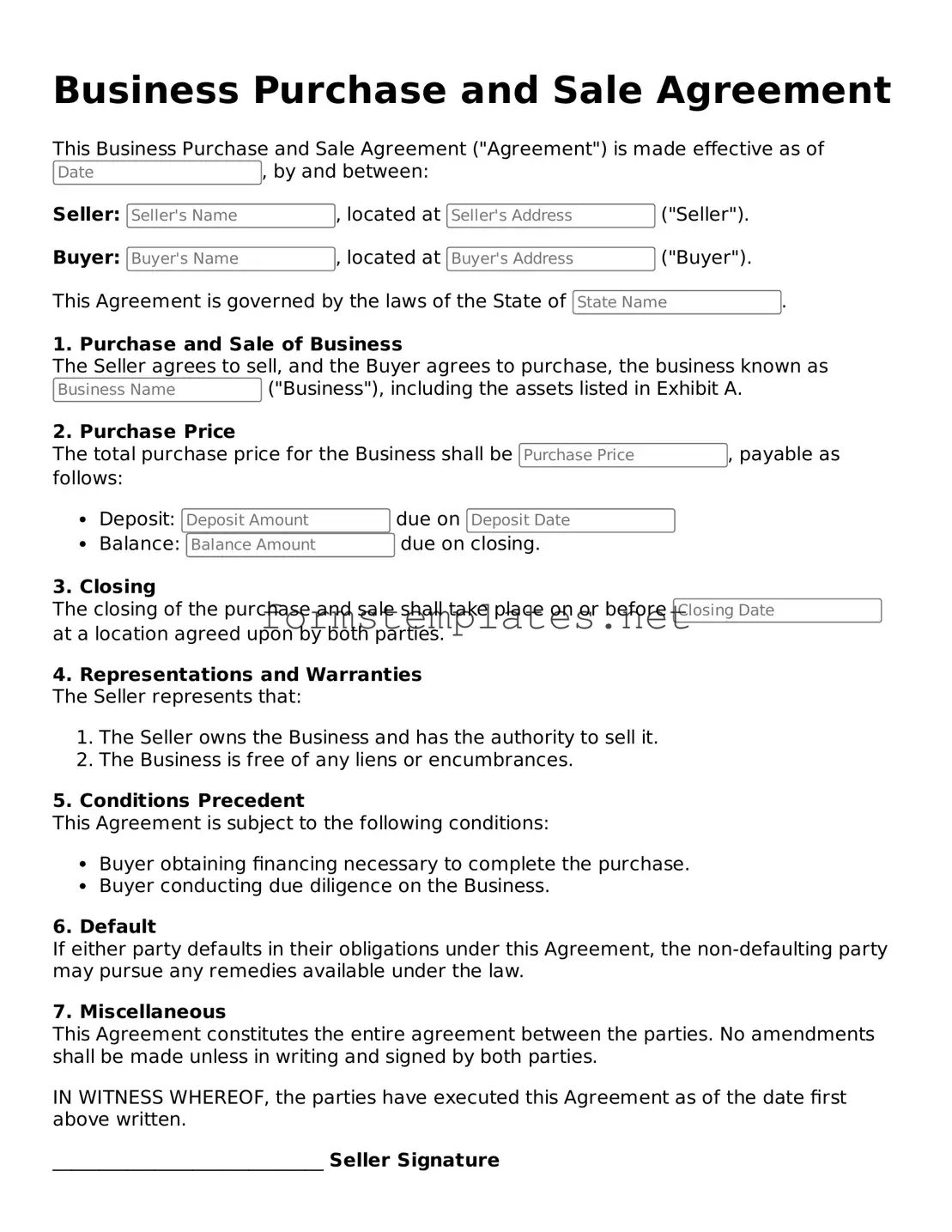Attorney-Verified Business Purchase and Sale Agreement Form
A Business Purchase and Sale Agreement is a legally binding document that outlines the terms and conditions under which a business is bought or sold. This agreement protects both the buyer and the seller by clearly defining the responsibilities and expectations of each party. Understanding this form is essential for anyone looking to navigate the complexities of a business transaction.
Open Editor Now
